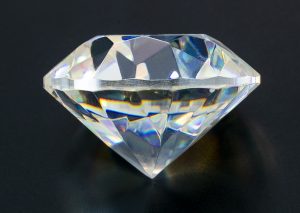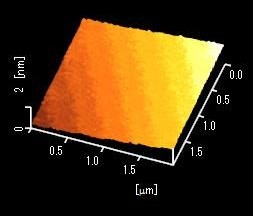The world’s first synthetic gemstone is said to have been ruby (Cr: Al2O3), grown by Verneuil in 1902 using the Flame-Fusion method. SrTiO3 crystals have a high refractive index of 2.407 (at 589 nm), which is very close to that of diamond (2.417). SrTiO3 was said to have been grown for imitation diamond under the name Strontium-Titanium-Diamond. Other crystals grown as this imitation diamond include TiO2 (rutile), Y: ZrO2 (YSZ), Ca: ZrO2 (CSZ), Y3Al5O12 (YAG) and Gd3Ga5O12 (GGG), in addition to SrTiO3, which continues to be active in various fields over 70 years later.

SrTiO3 crystal
Although SrTiO3 crystals were noted as imitation diamonds, but with the discovery of Y-Ba-Cu-O (YBCO) superconductors in 1987, high-Tc superconductivity research became active, and SrTiO3, which has a similar crystal structure to YBCO and a close lattice constant, came into the spotlight as a substrate for thin-film growth. In 1994, a method was developed to wet-etch SrTiO3 (100) substrates to atomically flatten the surface (step and terrace surface) and define the top atomic layer as a TiO2 layer terminated. The use of “STEP substrates” based on this technology guarantees the surface quality of the substrate in the initial phase of thin-film growth and has led to a dramatic advance in atomically controlled thin-film growth technology.
Due in part to the stable availability of STEP substrates, SrTiO3 substrates have now established themselves as one of the most common substrate materials among the various substrates used in thin-film growth research.

AFM image of a commercial SrTiO3 STEP substrate